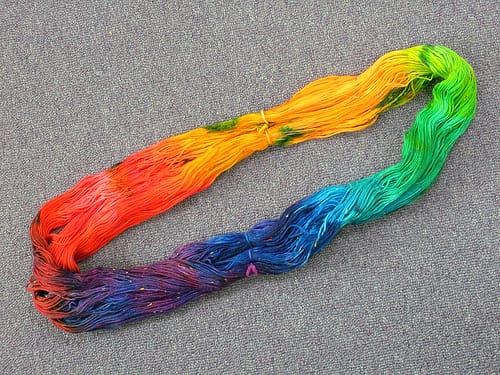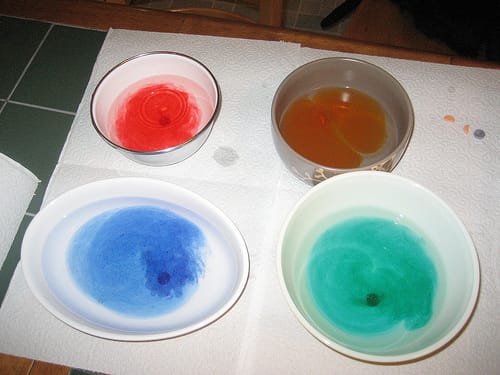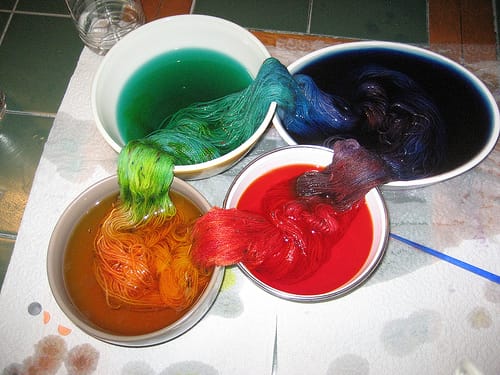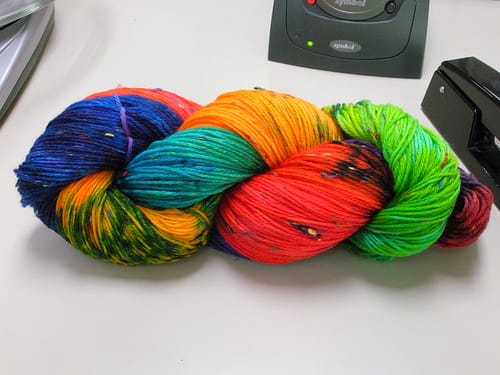There’s one kind of food-grade dye that I really like to use, but it can be a little hard to find. Usuallly it’s only available in stores in the spring.

Easter Egg Dyes!
Above is a skein of our Bare Superwash Merino, Nylon, Donegal Sock Yarn, which I dyed with Easter Egg dye tablets and food coloring drops. I did this earlier in my dye “career” so I’ll share my process with you, but also probably point out things I would do differently now that I know better (and have access to better materials!)
I started with 4 easter egg dye tablets in colors I thought I would like (it can be hard to tell from the color of the tablet what color the dye will be) and dissolved them in a water/white vinegar solution in separate bowls.

I tied up the hank of yarn in 3 or four places (to keep it from getting snarled and tanlged through the dye process: see a diagram of how hanks are tied here) and soaked it, also in a water/vinegar mix, for 30 minutes of so. Once it was fully saturated, I wrang it out, and put it in the dye bowls in sections:

And then I dripped a whole bunch of food coloring onto the white sections between the bowls. I shifted the yarn around a bit to try to blend the colors and get good transitions.And then I let it sit for a while (maybe an hour) while the dye absorbed. Once the water in the bowls looked clear, I pressed as much excess liquid out of the yarn as I could (being careful not to let the colors mix!) and put it in my steamer over some simmering water:

Then I covered it and let it steam for 10 or 20 minutes, to set the dye. I did get some bleeding in the steamer; you can see some of the blotches on the finished hank:

But it looks okay, since it’s a tweed yarn, the blots actually blend in really well.
I am so extremely happy with this yarn (and it made pretty great socks, too…but those are for the next post :)) If I were to make something like this again, though, I would do one of two things, either use the “Cold Pour” method that Julie Theeler described in Knitty (you should read that whole article, in fact; all of her methods are fun and will work with hanks or sock blanks!) or else, use big canning jars instead of the bowls of dye, and place them directly in teh simmering water, so that the color won’t mix at all (Here is a great blog post detailing what I am talking about–she also re-wound her yarn into a super huge hank to get a self-striping yarn!)
Like I said, I was really, really pleased with this project! Next time, I’ll share the socks I made out of it!



